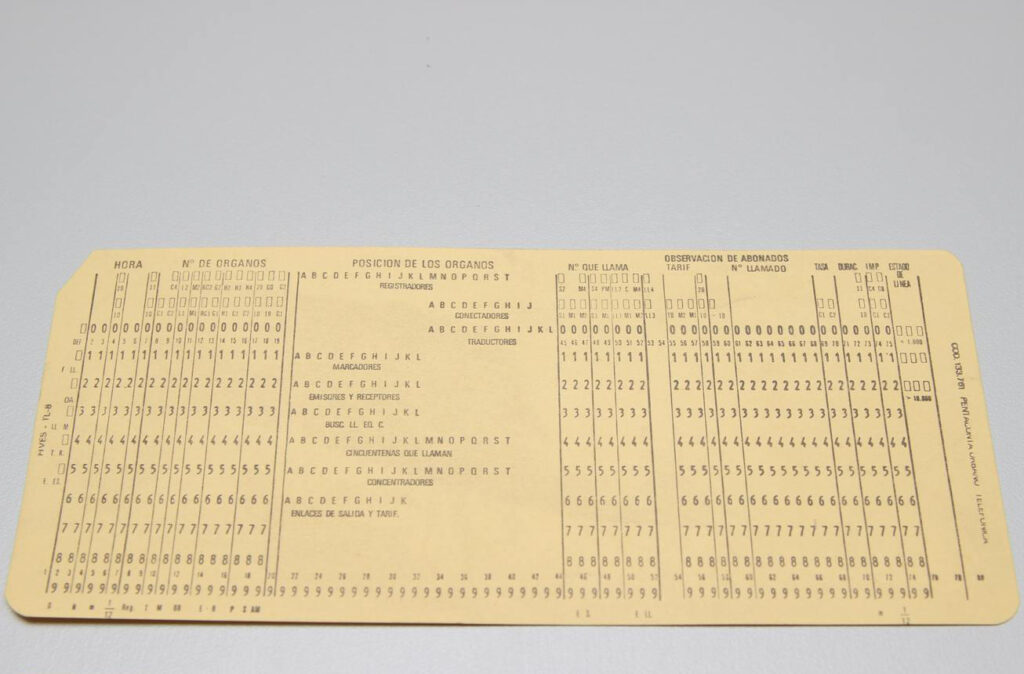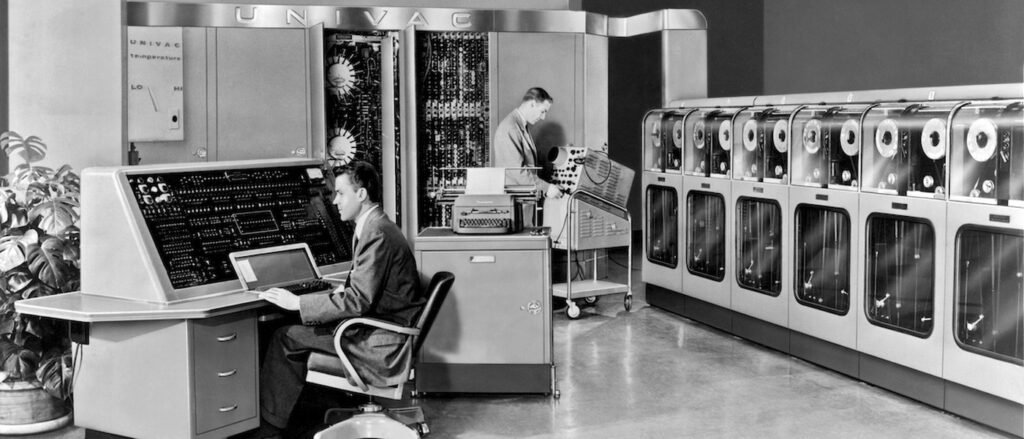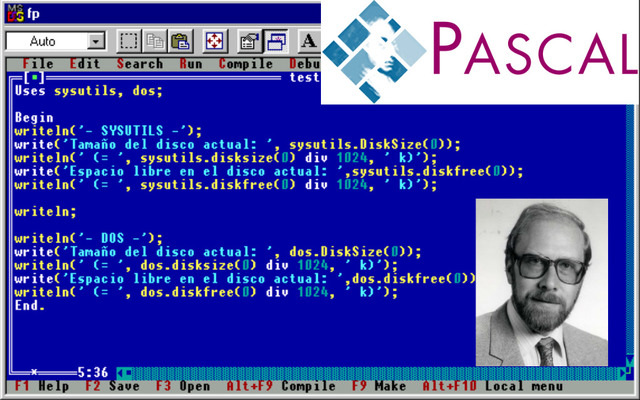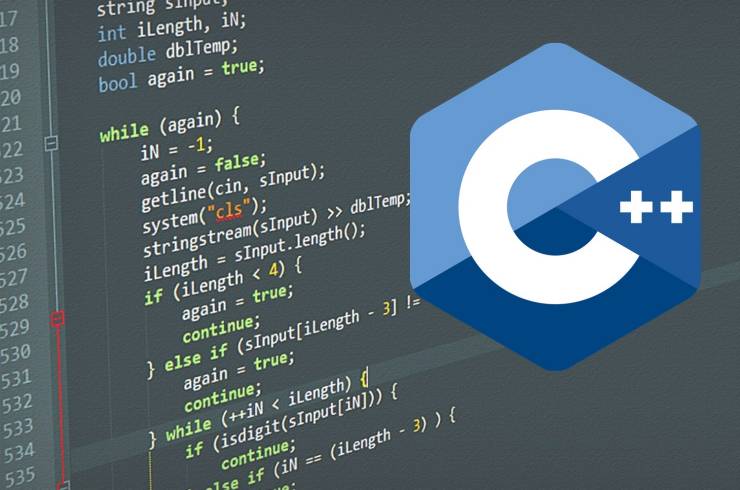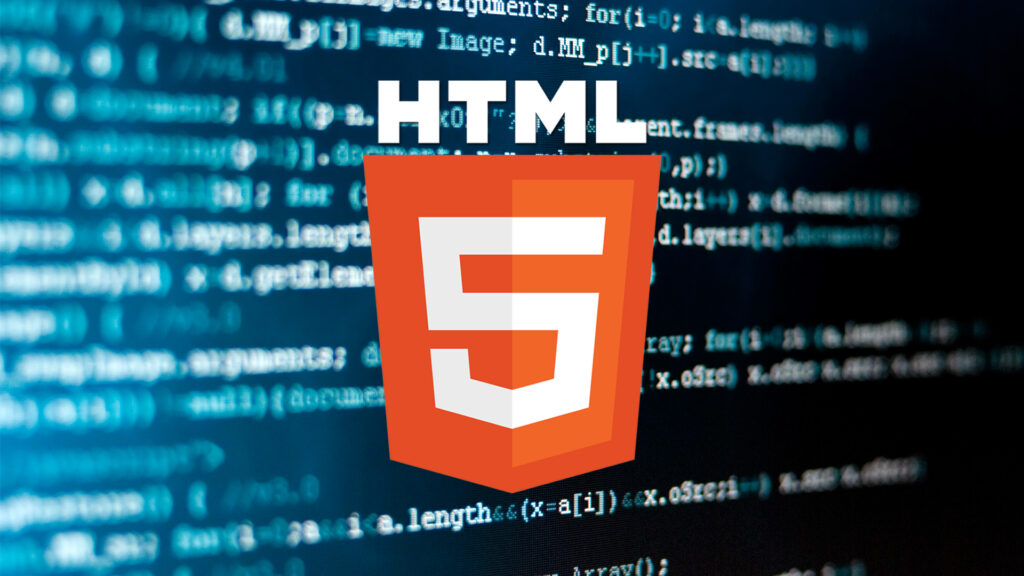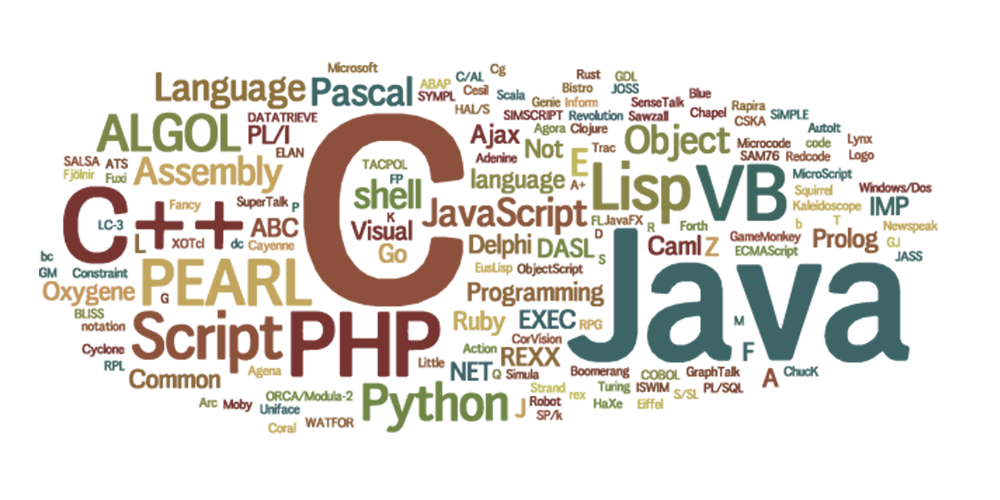With the permanent evolution of computers, programming languages have evolved. Investigating achieves that the first language was created more than 100 years ago and developed by a woman. Let's see what the history of programming languages.

History of Programming Languages: Background
Over time and the permanent evolution of computers, programming languages have had to be modified and improved according to the requirements of programmers and computers in general, generating a large number of languages and codes that have already passed into oblivion.
The initial programming languages predate the current computer, in the beginning the programming languages were codes. The loom machine created by Jacquard, in the year 1801, used the holes in cards that had perforations to recreate the movement of the mechanical arm of a weaving machine, in order to create decorative patterns automatically.
Between the years of 1842 and 1843, Ada Lovelace, managed to translate the work of Menabrea's work on a machine that Charles Babbage proposed, "The Analytical Engine." Ada Lovelace, added some observations on the methodology to make the calculations of the Bernoulli numbers with this machine.
Herman Hollerith encoded all the information on the punched cards, when he realized that the train drivers were able to identify the passengers using the hole they made in the ticket. Then in 1890, Hollertih created a passenger registration data code on these cards.
The initial computer codes were specialized according to what they were going to be used for. In the early decades of the XNUMXth century, numerical calculations were based on decimal numbers. Later, they realized that logic could be symbolized with numbers.
Alonzo Church expressed the Lambda calculation using formulas. The Turing machine, laid the foundations for compiling programs as data from a computer in the Von Neumann architecture.
However, the Turing code did not serve successfully as a foundation for more advanced languages, but was used in rigorous analysis of algorithms.
The first history of programming languages, it is difficult to locate in time with precision. From the beginning, hardware limitations defined the history of programming languages.
Initially the punch cards only supported about 90 columns, however, they would be used to make a classification of each of the cards. The use of the magnetic drum for memory meant that the programs had to be interspersed with the oscillations of the drum. So, the programs depended on the hardware.
For certain experts, the Jacquard weaving machine, as well as the Babbage Machine, were very basic languages and with limitations to describe actions that these machines did. Inside of history of programming languagesEven punch cards are considered a basic language, although it was not created for human consumption.
Important dates and data
In the 40s, the first computers were developed, powered by electrical current. They had speed and memory capacity limitations, forcing programmers to create simple programs. In the long run, they realize that programming as a language needed a great intellectual boost since you could eat mistakes if you did not know the subject.
In the year 1948, Konrad Zuse published an article on a programming language that he developed called Plankalkul, but did not do further research in this area. Among the languages that were created at that time, the following can be highlighted:
-
1943: ENIAC Code.
-
1948 Plankalkul, this was implemented half a century later.
-
1949 to 1954 - A set of instructions was developed that were created for specific manufacturers.
50s and 60s XNUMXth century: Beginning of the history of programming languages
At this time, the three programming languages still in force were developed, which are:
-
1955 - FORTRAN, developed by John Backus.
-
1958: LISP, developed by John McCarthy.
-
1959: COBOL, developed by the Short Range Committee, and her influence was Grace Hopper.
Another important moment was at the end of the 50's, when it was published by an American and European Committee of Computing experts (Algol), about an updated "Language for Algorithms". This report brought together many ideas and observations of the day and provided two relevant innovations for the history of programming languages:
-
Nested Block Structures: Code sequences and related declarations are packed into blocks without having to be explicitly to individual processes.
-
Lexical scope: a block has its own variables, processes and functions, which are not visible to the code outside of this block, an example would be, hiding data or information.
Another innovation associated with this information is the following:
-
A precise mathematical sign, Backus - Naur Form or better known as BNF, was used to describe the construction of the language. All of the following programming languages have used a variation of BNF to describe the context-free part of their construction.
This American and European committee especially influenced the development of subsequent languages. Burroughs' large systems were developed to be programmed into an expanded set of such a committee that became known as Algol.
Algol's main ideas spread and by the year of 1968, Algol 68 was realized:
-
The construction and semantics were made more orthogonal, with unknown routines, a typing system with higher order functions.
-
Not only was the free part of the context formally defined, but also the construction and semantics, in terms of Van Wijngaarden's grammar, created for this purpose.
The broad but unused features of y Algol 68 and its complicated system of automatic shortcuts and restrictions led to unpopularity and difficult application.
So Niklaus Wirth broke away from the committee and developed the simple language known as "Pascal." These are some of the languages developed at that time:
-
Year 1951: Regional assembly language.
-
Year 1952: Autocoder.
-
Year 1954: IPL.
-
Year 1955: Flow Matic.
-
Year 1957: FORTRA N.
-
Year 1958: LISP.
-
Year 1959: FACT, COBOL and RPG.
-
Year 1962: APL, Simula and SNOBOL.
-
Year 1963: CPL.
-
Year 1964: BASIC and PL / I.
-
Year 1967: BCPL.
The 70s: fundamental models are established
Between the 1960s and 1970s, there was a great boom in the history of programming languages. Most of the most relevant programming language models that are used today were created at this time:
-
SIMULA, was created in 1960 by Dahl and Nygaard as an Algol 60 superset, it was the first language of the history of programming languages, developed to strengthen the programming created towards objects.
-
The C programming language was initially created as a systems programming language, the developers were Ken Thompson and Dennis Ritchie in the years 168 and 1972.
-
Smalltalk, created in the 70s, provided a broad design of a language to objects.
-
Prolog, created by Roussel, Colmerauer and Kowalski in 1972, considered the first logic programming language.
-
ML built a polymorphic type system, created by Robin Milner in 1973, on the cusp of Lisp, considered a forerunner in static type functional programming languages.
The programming languages described were the fundamental basis within the history of programming languages, all current languages have at least one of these in their registry.
At this time there was also a wide debate of ideas about the merits of structured programming, which basically symbolized programming without the use of GOTO. This torrent of ideas was related to the design of the language, since some languages did not contemplate GOTO, and so the programmer was forced to create structured programming
Some of the programming languages that were created between this time, are:
-
Year 1968: Logo.
-
Year 1969: B, predecessor of C.
-
Year 1970: Pascal and Forth.
-
Year 1972: C, Prolog and Smalltalk.
-
Year 1973: ML.
-
Year 1975: Scheme.
-
Year 1978: SQL, which in its beginnings was a language for queries and later extended to the construction of programming. Modula - 2 was also developed this year.
80s: strengthening, modules and performance
The 1980s are considered within the history of programming languages, as the time of strengthening in imperative languages. Work continued on languages already created in the previous decade.
C ++, came to combine programming towards objects and system programming. The US government achieved the standardization of ADA, which is a systems programming language to be used by war and defense companies.
In Japan, for its part, a large part of the National Budget was invested in research on "Fifth generation programming languages", which included buildings of logic programming. The Society for Functional Languages performed ML and Lisp normalization.
The research progress of the functional language called Miranda, which was going very slowly, began to catch on at this time.
The trend in the area of language design was a better approach to programming systems on a larger scale through the use of modules, a large-scale organization of code units.
Languages such as Modula, Ada and Ml created outstanding module systems in the 80s, and they were related to the construction of generic programming, which would be modules already with predetermined parameters.
Although no new ideas were developed about programming languages, most of the specialists expanded the foundations of previous languages and achieved adaptations to new realities. An example of this are the languages of the Emerald and Argus systems, which made the adaptation of programming to objects for distributed systems.
In the 80s, progress was made in the implementation of programming languages. The RISC group working on Computer Architecture pointed out that hardware had to be created for compilers and not for programmers.
So, with improvements in processor speed, with more effective collection methodologies, the RISC group attracted interest in high-level language collection technology.
The technologies of programming languages continued to work on this work, in the beginning of the 90s.
Among the most prominent languages that were created in this decade, we can mention:
-
Year 1980: C ++, which is the version of C but with classes.
-
Year 1983: Ada.
-
Year 1984: MATLAB and Common Lisp.
-
Year 1985: Eiffel.
-
Year 1986: Erlang and Objective - C.
-
Year 1987: Perl.
-
Year 1988: Mathematica and Tcl.
-
Year 1989: FL.
90s: Internet time
The rapid evolution of the Internet during the 9 years, was the great event of the history of programming languages. With the creation and development of a completely innovative platform for Computing systems, the Internet brought an opportunity for the adoption of new languages.
In particular, it should be mentioned, the JavaScript programming language, which quickly gained fame, due to its rapid coupling with the Netscape Navigator browser, as well as other languages that managed to expand its use in the creation of particular applications for web servers.
We invite you to read, if you are interested in knowing about Wireless technologies: definition and functions.
The 90s, was the time of the new combination and advancement of precursor languages, in addition to which functional languages began to spread. Object-oriented rapid development or RAD application languages were generated, among which we can mention: Visual Basic, Java and Object Pascal.
Innovative and radical languages, known as scripting languages, were also developed. They are languages with greater productivity than RADs, however, their productivity is often due to the fact that it is more complicated to write and preserve long programs than simple and small programs.
However, script programs became the most prominent in web connectivity.
Among the most relevant languages created in this decade, we have:
-
Year 1990: Haskell.
-
Year 1991: HTML, Visual Basic and Python.
-
Year 1993: Lua and Ruby.
-
Year 1994: CLOS.
-
Year 1995: JavaScript, PHP, Delphi and Java.
-
Year 1996: WebDNA.
-
Year 1997: Rebol.
-
Year 1999: D
Year 2000: Present Times
Within the history of programming languages, its natural evolution is continuous, at the research and industrial level. Among the current areas of work are:
-
Increased support for functional programming in programming languages.
-
Design and construction of languages to support distributed and concurrent programming.
-
Methods to add to the language, review and verification processes in terms of reliability and security: thread security, information migration control, extended syntactic review.
-
Alternate modularity methods.
-
Creation and development of component-focused software.
-
Metaprogramming and access to the abstract syntax tree.
-
Focus on distribution and mobility.
-
Integration with databases.
-
Support for Unicode in the source code.
-
XML for graphical interface.
-
Open source for the development of programming languages.
Among the most relevant languages created in this decade, we have:
-
Year 2000: ActionScript.
-
Year 2001: Visual Basic.NET and C #.
-
Year 2002: F #.
-
Year 2003: Factor, Scala and Groovy.
-
Year 2005: Scratch.
-
Year 2007: Clojure.
-
Year 2009: Go.
-
Year 2011: Dart.
-
Year 2014: Swift.
If you liked this information, we invite you to review these other links of interest:
Hybrid cloud: definition, function, benefits and more.
